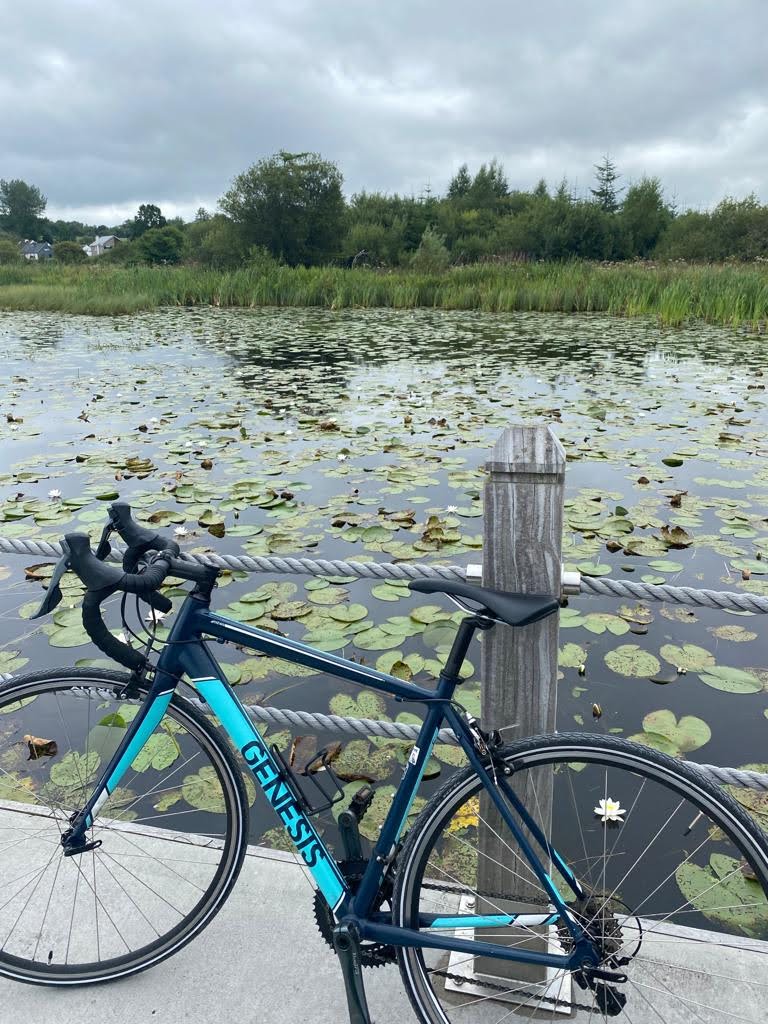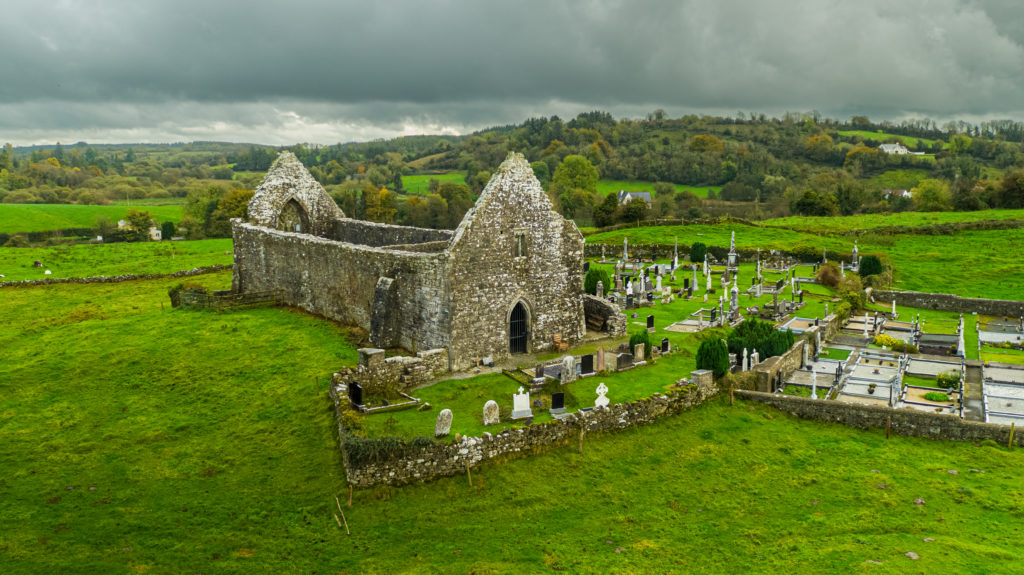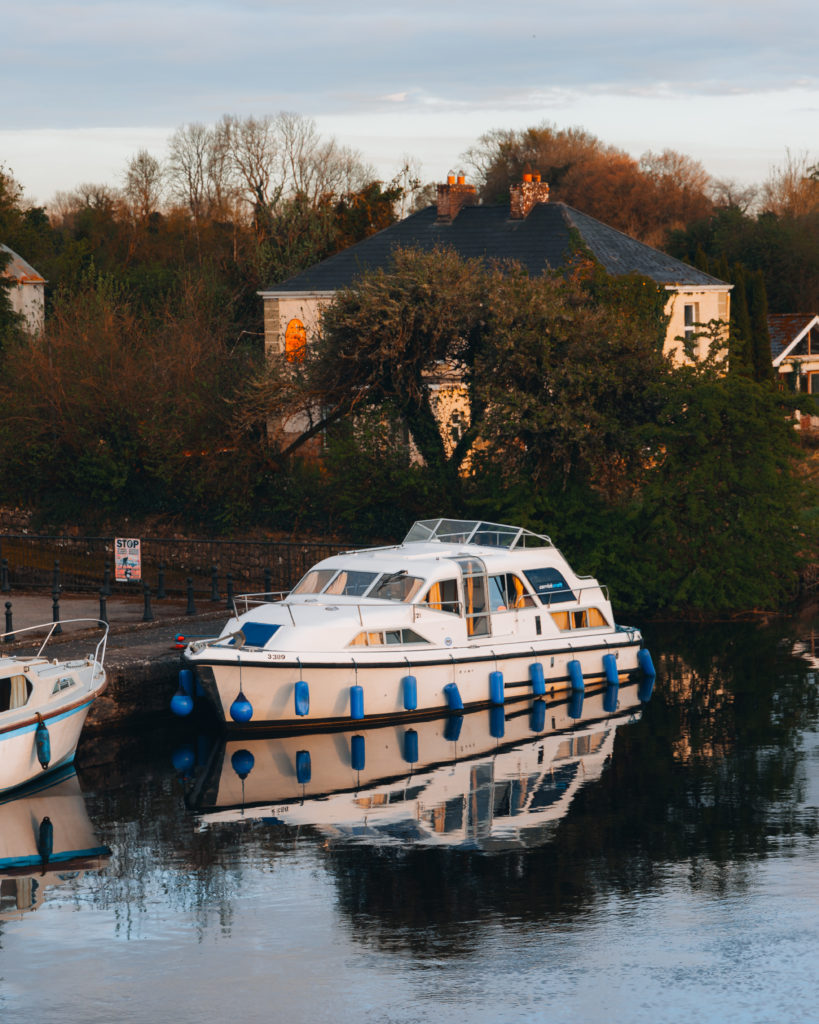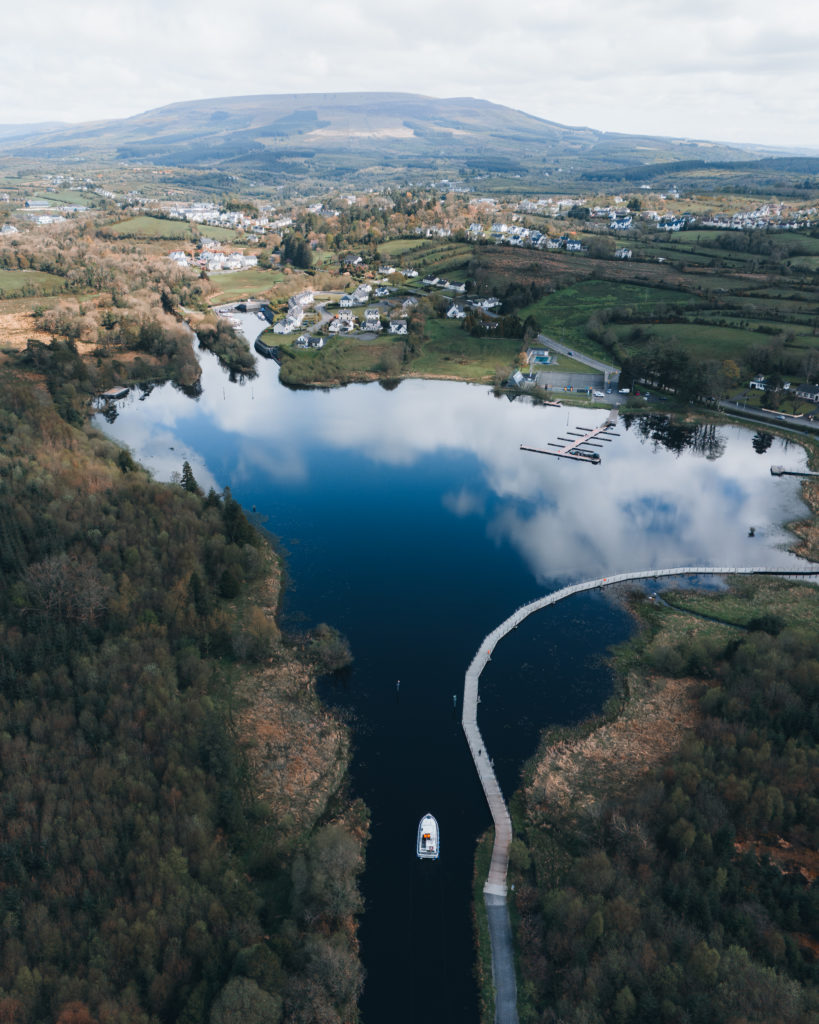Leitrim in Ireland’s Hidden Heartlands has loughs to spare, bogs to explore and pubs where you can hear the finest traditional music. Our multi award-winning travel writer MAL ROGERS pays a visit
 Acres Lake, floating boardwalk (picture Tourism Ireland)
Acres Lake, floating boardwalk (picture Tourism Ireland)LEITRIM is off the beaten track, certainly, hiding away in the Hidden Heartlands. But it’s simply not true there is only one set of traffic lights in the county. Used to be the case, right enough, but progress has swept through the county like, well, let’s see, a fairly slow-moving tractor. Today there are at least two sets of functioning traffic lights, perhaps three. And don’t forget there’s a marine set on the Shannon Waterway just outside Carrick. So that makes four.
What is true, however, is that Leitrim is the least populated county in Ireland, with 35,000 people from Tullaghan in the north of the county overlooking the Atlantic to Bornacoola on the banks of the River Rinn in the south, jutting up against County Longford. Basically, you could fit the whole population of Leitrim in the Cusack Stand and still have a bit of room left over for punters from Sligo.
This corner of Connacht is truly part of Ireland’s Hidden Heartlands: ancient folklore and rollicking pubs, rolling hills and heather-clad mountains, and idyllic waterways ideal for fishing and boating. My own life motto is quite simple: “Live every day of your life to the absolute fullest. (Unless of course it’s too hot like it has been in recent days, and you don’t really feel like it.)” Leitrim is the ideal place to put that into practice.
There are 40 loughs just within 10 km of Ballinamore alone. You can bag one all to yourself; and the angling, particularly coarse fishing, is of a seriously world-class quality.
 Jamestown Abbey, Carrick on Shannon, Co. Leitrim (image Tourism Ireland)
Jamestown Abbey, Carrick on Shannon, Co. Leitrim (image Tourism Ireland)But it’s equally a place you can sit indolently on the loughside and watch a cast of characters that includes dragonflies, jumping brown trout, and swallows performing astounding aeronautics just above the water’s surface.
The Shannon-Erne Waterway snakes through and along the county with villages to moor at along the way. From Carrick-on-Shannon or Ballinamore you can rent a boat, even a multiple-berth luxury cruiser, and get lost in the maze of loughs and rivers.
Lough Melvin is internationally renowned for its unique range of plants and fish – with three types of trout, this is ichthyology central. Try saying that after half a bottle of prosecco.
 Boating on the Shannon (image Tourism Ireland)
Boating on the Shannon (image Tourism Ireland)Covering an area of 2,000 hectares, it is famous for its early “run” of Atlantic salmon – which basically means if you’re into boasting to your friends about your catch (and which angler isn’t?), you can have one of the first tall tales of the season here.
William Butler Yeats, whose name even sounds like a piece of poetry, wrote much of his work here in Leitrim and Sligo (although Sligo nicked most of the honour). And somewhat incongruously, perhaps, in a land with more than its fair share of dramatic coastlines, Lough Allen can lay claim to some of the best beaches in Ireland.
County Leitrim has often been called a mapping error, with just over two miles of coastline, a huge lough splitting the county in two, and several not insignificant peaks — all crammed into one little corner of the province. The Dartry Mountains in particular provide plenty of opportunity for some superb hikes. The area is rugged, and although not rising to any great height, the limestone outcrops form dramatically curious shapes, with vertical cliffs and isolated rock spires.
The highest of the summits is Truskmore (2,113 feet). The many boglands have given the area a reputation for dampness: indeed, locals will tell you that farmland "isn’t sold by the acre – it’s sold by the gallon.”
Carrick-on-Shannon, the capital of the county, is the place to hire cruisers, fishing day boats or a host of other watercraft.
But the town has its curios too. At the top end of Bridge Street is the “second smallest chapel in the world”. Now I know of at least three smallest churches in Ireland, so I wouldn’t be surprised if there is more than one second smallest one. Whatever its claims, the minuscule Costello Chapel, built in 1877, is certainly impressive in its diminutiveness. Built on Edward Costello’s instructions as a memorial to Mrs Costello, the loving couple’s lead coffins (Mr Costello died not long after his wife) lie on each side of the tiny, decorated aisle. It’s definitely one for anyone on a church touring holiday.
 The lie of the land — and the water — in Leitrim (Tourism Ireland)
The lie of the land — and the water — in Leitrim (Tourism Ireland)An unmissable seisún in Carrick
Music is part of the pulse of this area, and being Connacht, traditional music is of the highest quality. At Cryan’s Teach Ceoil on Bridge Street, Carrick, seisúns are going full throttle Thursday through Sunday – all year round. Spontaneous sessions, which go on till stupid o’clock, are also likely to break out any day of the week.
Watercraft on Lough Allen
LOUGH Allen Adventure Centre is tucked away on tranquil shores, and hidden by ancient woodland. A hidden gem for anyone craving outdoor excitement or lakeside serenity, this family-run hub has grown from a local water sports outpost into a terrific adventure destination, an ace place even if you’re not particularly adventurous. Whether you're paddling a kayak through still waters, learning to sail, or testing your balance on a stand-up paddleboard, you’ll find something nautical to suit you.
http://loughallenadventure.ie/
Nearby Acres Lake Boardwalk is a floating boardwalk, in the village of Drumshambo, and the start of a 6.5km linear walking and cycling trail. It snakes and bobs along the Shannon Blueway from Acres Lake to Battlebridge Lock, near Leitrim Village, connecting to the Drumhauver Bridge loop walk and the Drumleague Lock loop walk.
A divine journey
IF YOU only visit one ruined monastery a year, my recommendation would be Jamestown Abbey, nestled in the village of Jamestown on the banks of the Shannon just to the southeast of Carrick.
The abbey, founded by the O’Rourke clan, remained an active Franciscan site until at least the mid-1600s. Though modest in scale, Jamestown Abbey holds a poignant place in local religious and cultural heritage. It saw plenty of sectarian turbulence, of which there was plenty in this neck of the woods.
 The dogs love the bogs
The dogs love the bogsA visit to the bog
TUCKED away in the quiet countryside east of Dromod, Cashel Bog in County Leitrim is a surviving example of Ireland’s raised bog landscape. Designated a Natural Heritage Area, this 128-hectare site is one of the most ecologically valuable bogs in the northwest, preserving a habitat that has largely disappeared due to turf-cutting and drainage.
Cashel Bog’s dome-shaped profile, built up over thousands of years through the accumulation of sphagnum moss, supports a remarkable array of plant life. Ling heather, cotton grass, sedge and reeds flourish here, creating a patchwork of colour across the spongy terrain. The pools and hummocks provide vital breeding and feeding grounds for wildlife, including curlew, red grouse, and the Greenland white-fronted goose — a winter visitor who’ll be arriving at the end of summer. All year round, the red, sparkling sundew — a carnivorous plant — can account for about 60 insects in a year. So as a fly deterrent it’s not that efficient; but striking in its beauty and intriguing nonetheless.
Aside from its biodiversity, the bog acts as a natural carbon sink and a living record of environmental history. Turf layers in places like Cashel preserve traces of past climates and human activity going back millennia.
Though vulnerable to damage from past peat-cutting and drainage, Cashel Bog remains largely intact. An unusually silent place, Cashel Bog is often overlooked, and quietly remarkable. Leitrim at its most elemental and enduring — this is deep into Ireland’s Hidden Heartlands.
Relaxed slow adventure
HIDDEN high in the rolling hills above Lough Gill, Ard Nahoo Eco Cabins offer a tranquil getaway. This award-winning retreat in Dromahair features three timber-framed eco cabins, crafted from Irish cedar and insulated with hemp, and powered by wood pellet stoves and wind turbines.
Each cabin boasts a fully equipped kitchen, private deck with panoramic views, cosy antique furnishings, and sheepskin rugs.
There’s an outdoor sauna, hot tub, infrared “detox” sauna, and you don’t even have to go to yoga sessions if you don’t want to.
Where to stay
FOR sumptuous, romantic lolling about, head for Lough Rynn Castle, just south of Mohill. The castle — the real deal in days of yore — is sandwiched between Lough Rynn and Lough Errew.
Originally built on the Mac Raghnaill grounds, the ancient rulers in this area before the Normans fetched up, the mediaeval castle has changed hands many times, undergone many makeovers. Substantial remains of the original building can still be spotted in the grounds.
But no matter who happened to be tenants at the time — whether the ancient Gaelic lords the Mac Raghnails, or the Anglo-Norman arrivistes, or the English occupiers who came along later — none could ever suspect the luxury that one day might be available within the grey stone walls of their fortress.
Today Lough Rynn Castle, standing in its own ground of 300 acres on a secluded spot on the shores of Lough Rynn, retains its historic splendour — but with the addition of boutique bedrooms, antique furnishings, open fires, wood panelling, decorative stone and glasswork, and luxury catering.
http://loughrynn.ie
Bush Hotel
THE Bush Hotel in Carrick, at over 200 years old, is one of Ireland’s oldest purpose-built hotels and sits in the heart of town on Main Street. The hotel features 60 rooms that cater to both business and leisure travellers, so probably not quite classed as a boutique hotel. But comfortable all the same, with very passable bar and restaurant, and very central to all carry-ons and craic in Carrick.
http://bushhotel.com
For more details about holidays in Ireland:
http://ireland.com
Leitrim and literature
HURRYING quickly along, we’re on our way to Drumsna. Until the early 19th century, this was the head of the Shannon Navigation. Nearby, the English novelist Anthony Trollope was postmaster. Trollope, who invented the post box, lived in many parts of Ireland, but spent longest in Drumsna.
Here, in this tranquil part of Connacht, the author found time to write two novels, The Macdermots of Ballycloran and The Kellys and the O’Kellys, both based on the countryside and people of Drumsna and its neighbourhood.
To Trollope’s credit, he largely steers clear of any paddywhackeray. He was more sympathetic and nuanced than many of his contemporaries, and that includes some Irish writers.
Trollope lived and worked in Ireland for many years, and had a genuine interest in Irish society. In The Macdermots, he depicts the tragic decline of a Catholic landowning family and explores themes of poverty, injustice, and sectarian tension. His Irish characters are complex and often treated with dignity. His writing demonstrates a genuine love of the Leitrim landscape and its people.
But County Leitrim has that effect on you. It’s conducive to writing. I was pretty sure, as I disembarked from a cruise down the river — after spotting kingfishers, herons and sedge warblers — I’d go back to my hotel room and write some poetry, something maybe Yeatsian. As it happens, I didn’t, but I very well might have, had I not popped into a fine pub called Cryan’s Teach Ceoil. For further information see below.
For further information on Trollope’s Leitrim, swing by the Glenview Folk Museum just outside Ballinamore. The museum consists of many different attractions from old household & farm items to vehicles and a full street scene which has been fully reconstructed to really give you a feel for 1930s Ireland.
You’ll find a higglety-pigglety collection of artefacts — including flachters and scraws for turf cutting, coins, ancient postcards, stamps, documents, old crockery, some knives, and a few ancient maps. In fact, with the exception of the flachters and scraws, more or less the contents of your office drawer.
http://glenviewmuseum.ie/
More recently in literary terms, Man Booker prize-winner DBC Pierre was very clear about Leitrim: “I lived to the age of 40 without ever hearing its name spoken. But the second time I saw it, I stayed; and I say second time, because the first made it clear I had to nip back and grab my belongings.”

